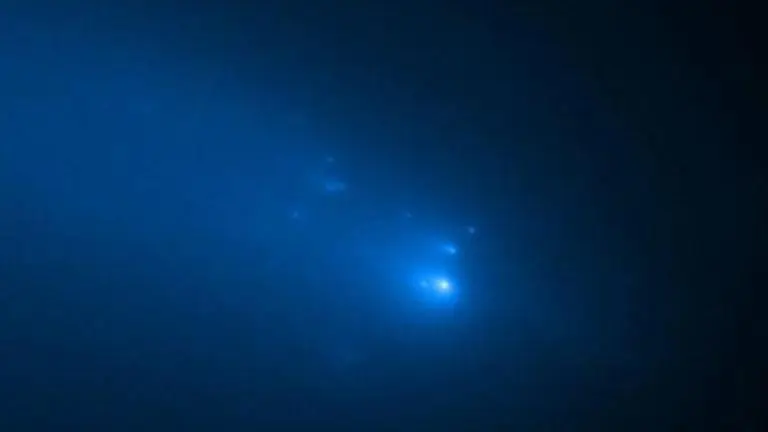Updated 16 July 2020 at 09:12 IST
Carbon levels in comet Atlas could help in detecting age of other comets: Astronauts
Examining comet Atlas that approached the Earth in May & disintegrated while bursting carbonaceous particles helped astronauts in determining the age of others
- Science News
- 2 min read

A team of astronomers from Russia, South Korea and the USA have suggested that the amount of carbon in a comet can identify the time it has spent in the solar system. As per a report in a science news website, if a comet has lower levels of carbon, it indicates that it has been in close proximity to the Sun for a longer period of time.
Examining comet Atlas that approached the Earth in May 2020 and disintegrated while bursting carbonaceous particles helped the astronauts in determining the age of other comets.
Russian astrophysicists Ekaterina Chornaya and Anton Kochergin joined an international team of researchers to study the composition of dust particles in the shell and tail of Comet Atlas. The study revealed that the carbon levels inside the comet were very high. Ekaterina Chornaya said that Atlas was expected to be the brightest comet of 2020 that would be visible from Earth but instead of observing the comet, everyone witnessed its disintegration.
Advertisement
High carbon levels in Comet Atlas
With the help of photometric and polarimetric studies that began before the disintegration process, the astronauts were able to compare the composition of the coma (comet shell and tail) before and after it fragmented. During the process, they noticed a dramatic growth of the positive polarisation branch, along with a large number of carbonaceous particles.
Advertisement
Ekaterina said that Atlas was a comet that enters the Solar System only once in 5,476 years. They occasionally approach the Sun and are rarely subject to heating.
Researchers are interested in learning about these comets as they contain a lot of preserved primordial matter that can evaporate under the influence of solar radiation, paving way for more studies. Chornaya, the polarimetric response of the particles from Comet Atlas matches with that Comet Hale-Bopp - one of the brightest comets in the history of Earth.
(Image credits: Twitter/NASA)
Published By : Gloria Methri
Published On: 16 July 2020 at 09:12 IST
